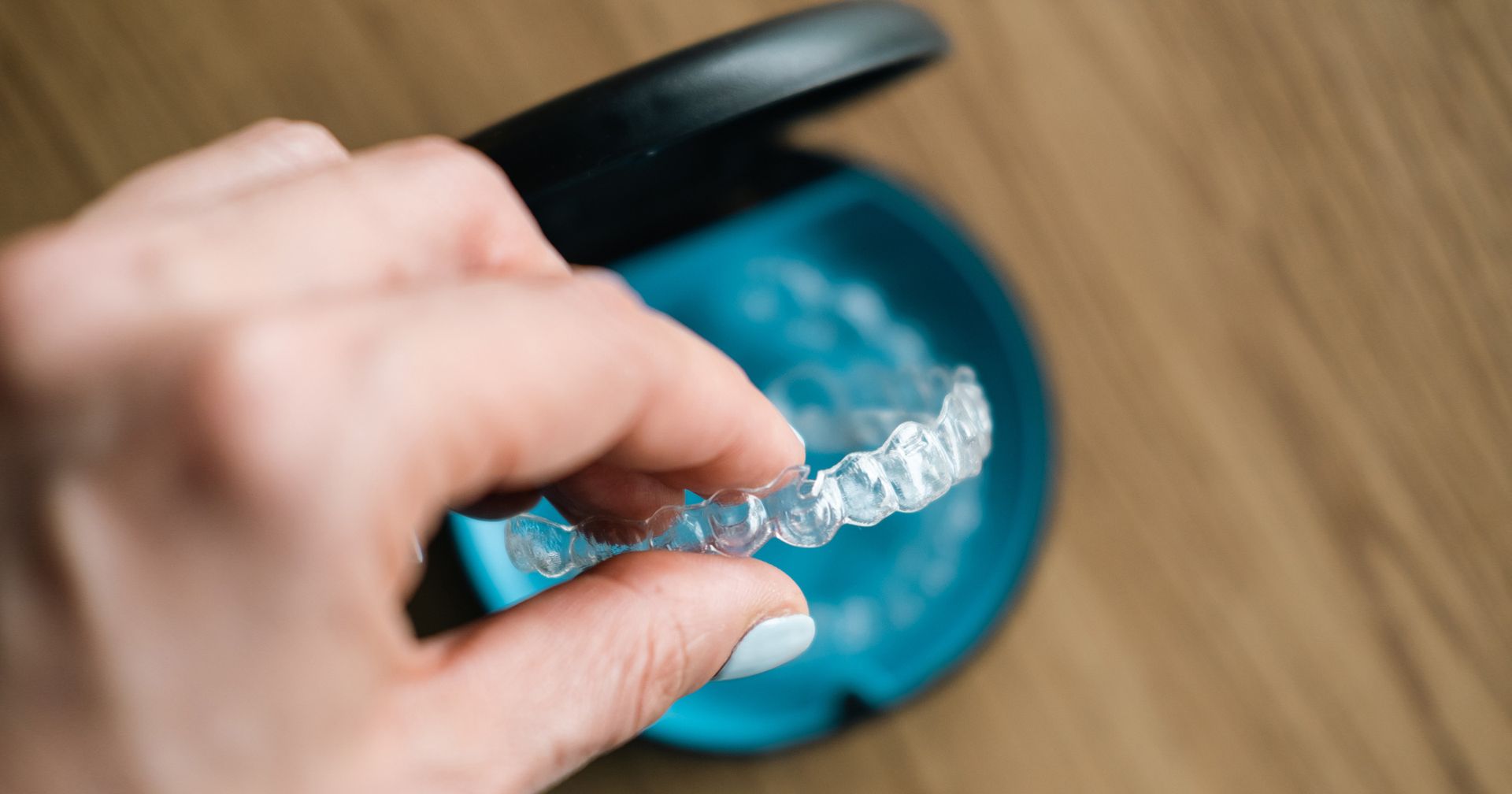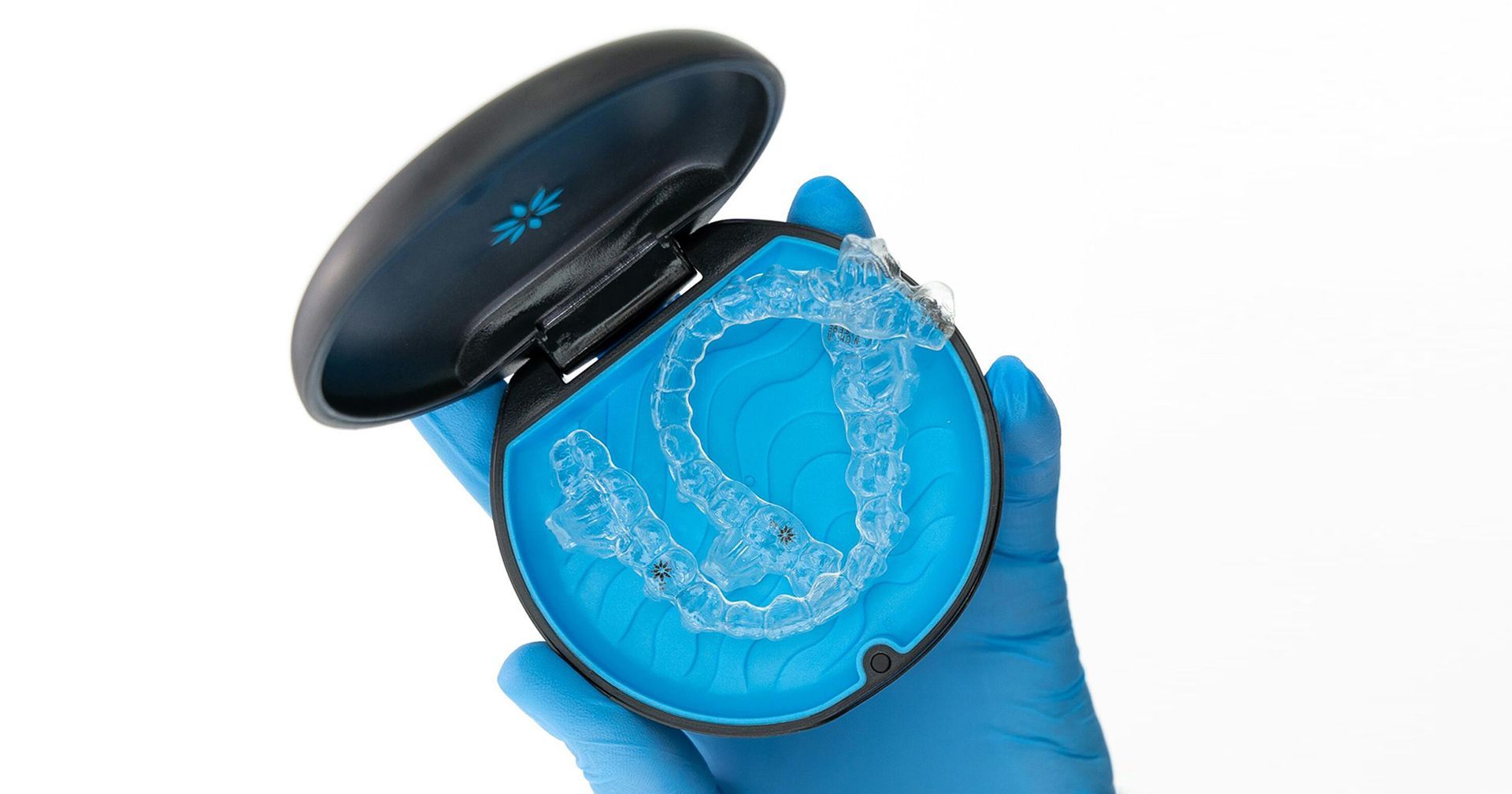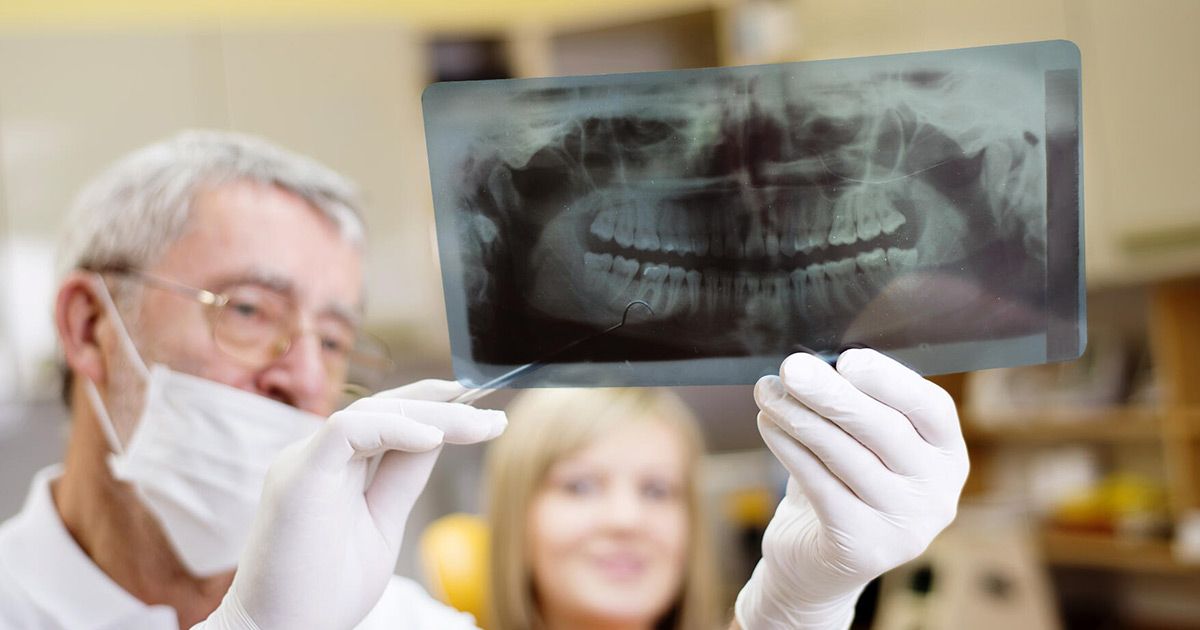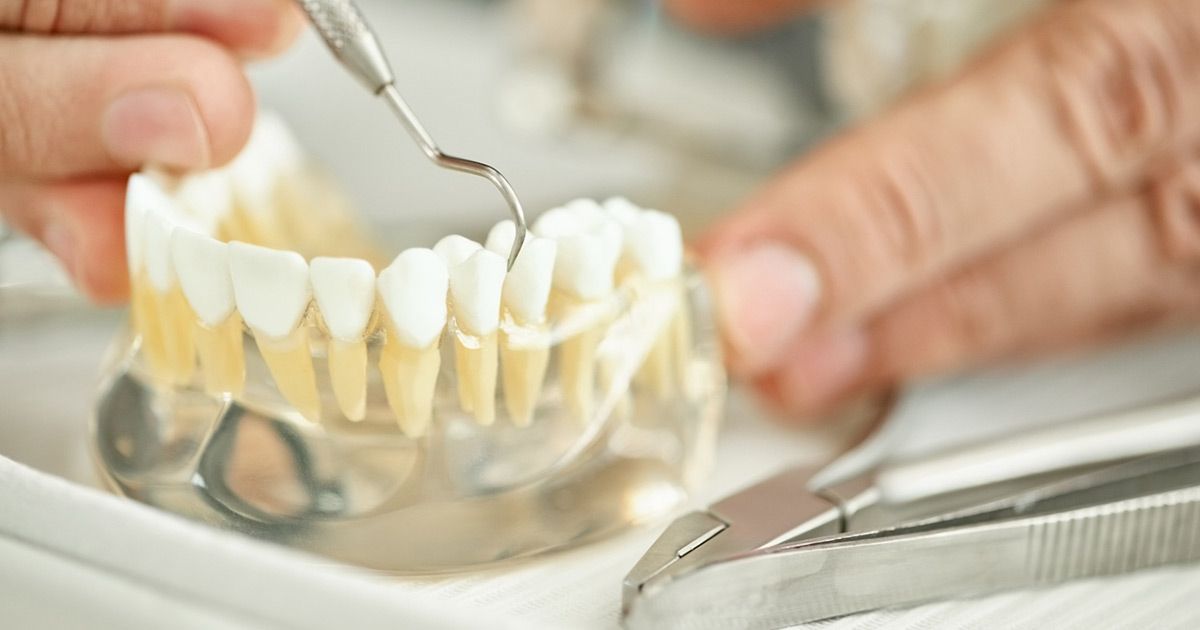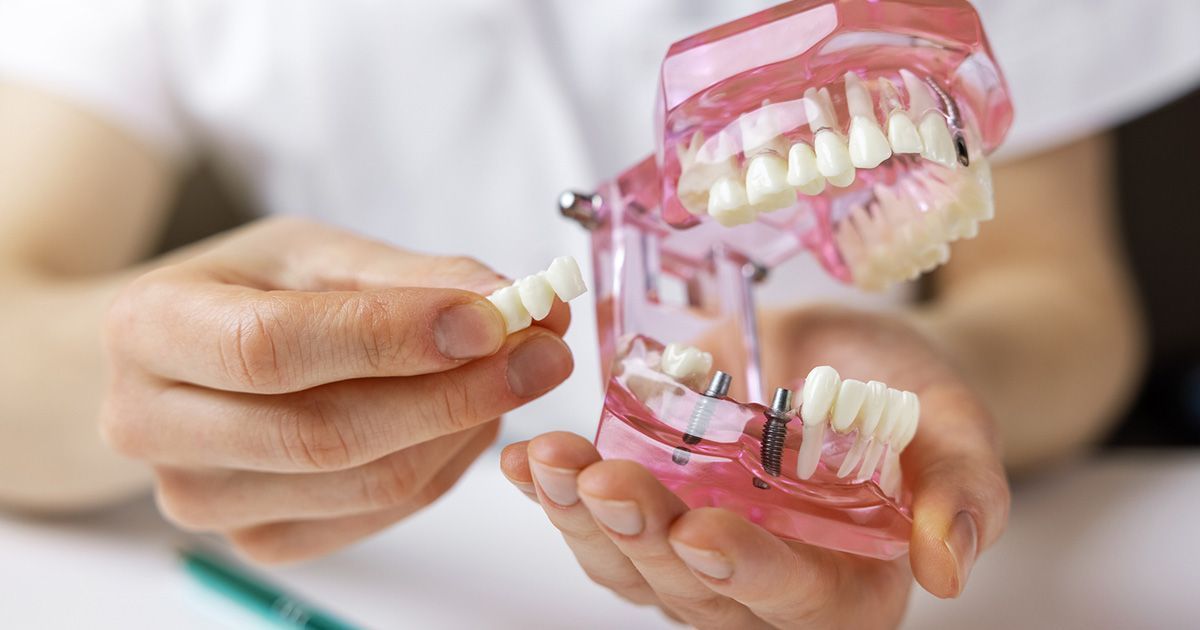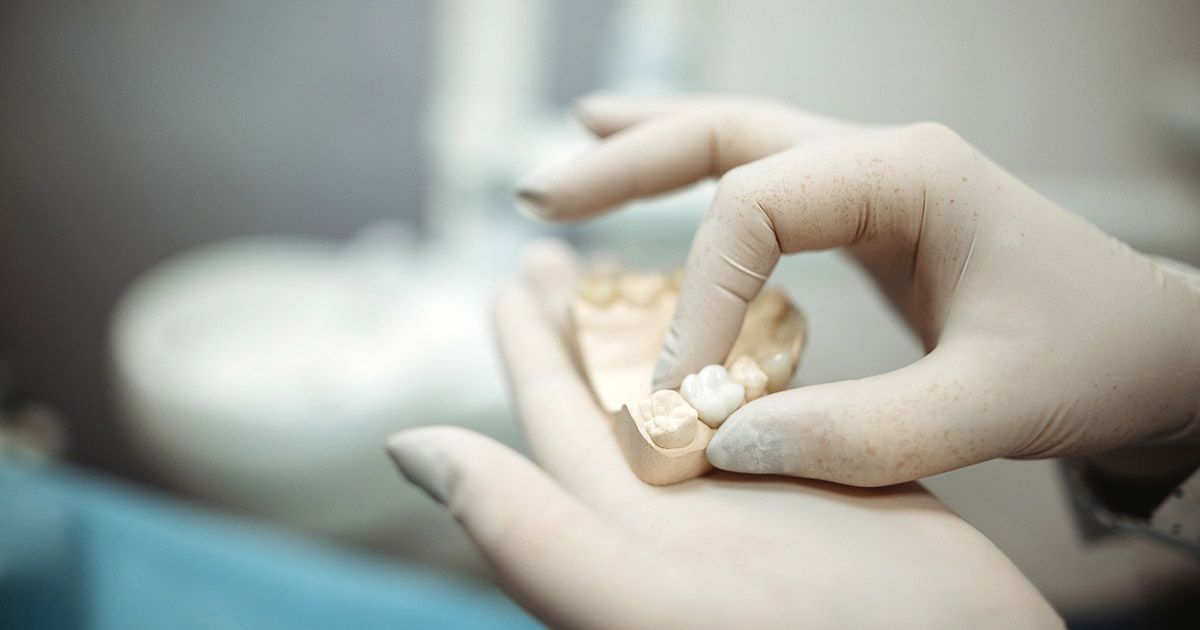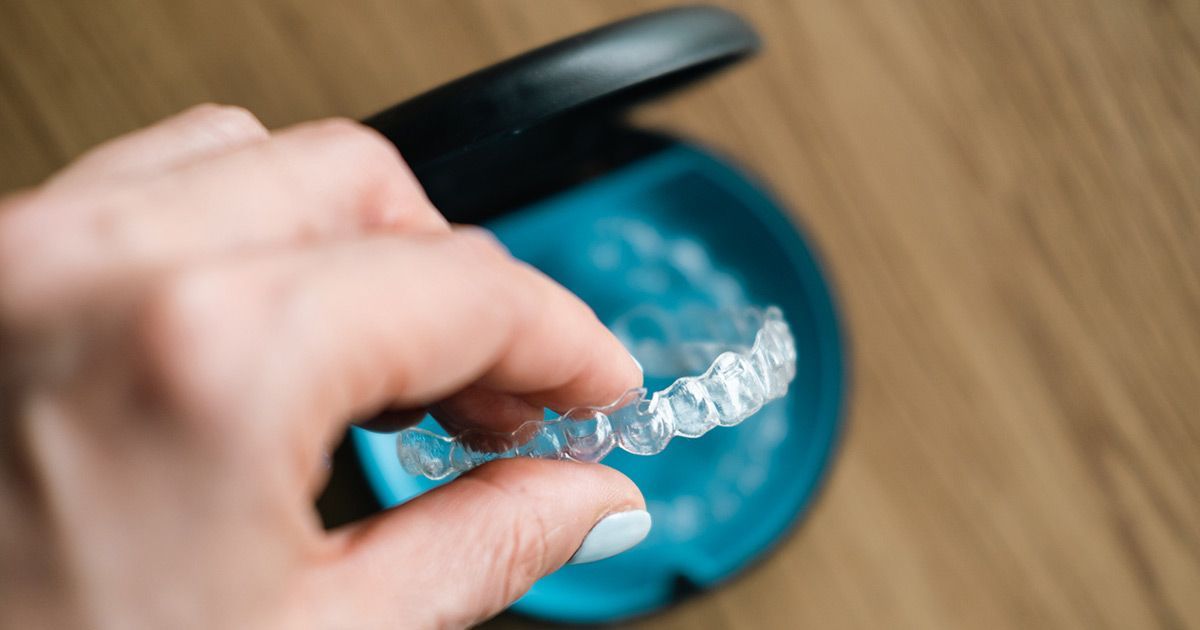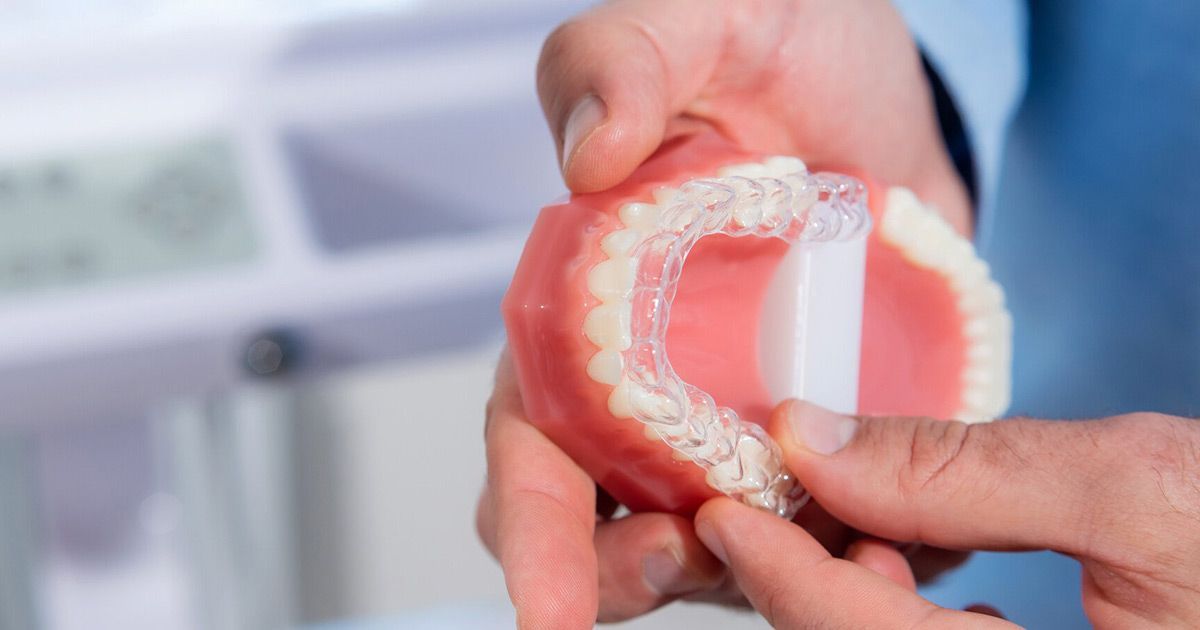A Complete Guide to Dental Implants
Smile On Us • February 14, 2020
Dental implants can be an excellent alternative to dentures. Find out everything you need to know about dental implants with this complete guide.
Are you embarrassed by missing teeth? Today, dental implants offer an effective method for replacing missing teeth. Their state-of-the-art design makes them hard to distinguish from your natural teeth.
In fact, implants are one of the greatest advances that have occurred in dentistry in the past 40 years. This long-term solution can give you back a confident smile.
Continue reading to learn all about dental implants.
What Are Dental Implants?
Dental implants
combine an artificial tooth root and a replacement tooth or crown. The shape of the titanium root mimics that of a normal root. The crown is often made of porcelain or acrylic.
The purpose of dental implants
is to:
- Take the place of one or more missing teeth
- Recreate your smile
- Correct a patient’s problem with chewing, speaking, and digestion
- Correct problems with a patient’s bite
- Resolve jaw pain caused by shifting teeth
- Correct and improve facial tissues and appearance
Implants may also secure partial or full dentures for increased patient comfort.
Types of Dental Implants
There are three common types
of dental implants.
Endosteal
The most often used style of implant is the endosteal. This type involves the placement of screws, cylinders, or blades into the jawbone. One or more artificial teeth are then attached to the part implanted in the bone.
Patients who have bridges or removable dentures may choose this permanent procedure.
Subperiosteal
For patients who can’t wear dentures or don’t have enough bone height, this implant offers a solution. A metal framework is surgically placed on top of the jawbone. Posts stick up through the gums to hold the crowns.
All-on-4s
The purpose of the all-on-4s procedure is to support bridges
or dentures. Patients who have many missing teeth benefit from this procedure. Instead of using an implant for each tooth, the doctor puts four implants
in the upper and four in the lower jawbone. These act as anchors. The dentures are then attached to these implants.
Advantages of Dental Implants
Dental implants offer many advantages over missing teeth, bridges, and dentures. Dentures or a bridge may only last about 10 years. The jawbone grows into the titanium dental implants making them permanent.
The implants look and act just like natural teeth. Due to the bond between the bone and the implant, you can chew with full power. This results in better nutrition, brushing, and flossing.
Missing teeth decreases the stimulation of the jawbone and results in bone loss. Dentures rub against the bony ridges and wear the bone away. Placing an implant in the empty spot triggers normal bone growth.
A gap caused by a missing tooth makes the adjacent teeth unstable. They start shifting and turning, which can change your bite and appearance.
Malocclusion or an abnormal bite can cause problems with the temporomandibular joint (TMJ). This often contributes to jaw pain and headaches.
Gaps can occur near the missing tooth and trap food and bacteria. If the bacteria aren’t removed, gum disease can develop. This can lead to further tooth loss, heart disease, and even fatal blood infections (sepsis).
Dental implants help prevent the premature appearance of aging. When a person has missing teeth and bone loss, the face begins to collapse. The distance between the tip of the nose and the chin decreases.
This leads to increased wrinkles around the mouth, thinner lips, and a pointed chin. All these changes create a more aged look.
Are You a Good Candidate for a Dental Implant?
First, you must have good general and oral health.
If the jawbone is too small, you may need a bone graft to support the implant. You won’t be a candidate if you have gum disease. The doctor must treat both issues before further work can proceed.
Once you're in good physical and oral health, preparation can begin for your implant.
Paying for Dental Implants
Dental implants can present an expensive endeavor. Depending on the dental plan, you may have partial or no treatment coverage. The following are several options for covering this expense.
Healthcare Installment Plan
Healthcare financing companies offer payment plans for dental procedures. Often, you can have the implant procedure done before paying for it. You pay small monthly payments over a set time.
Home Equity Line of Credit (HELOC)
HELOCs can pay for quality-of-life improving health expenses. This loan is subject to the current interest rate. You must also have a mortgage or own a home.
Retirement Plan Loan
Another option involves borrowing money from a saving fund. This may include a 401K or 403B retirement account. You pay a low monthly payment over 5 years. The lender examines the amount of money in your fund instead of your credit score or income.
Flexible Spending Account for 2020
As of January 1, 2020, employees have the right to put up to $2,750
in their Flexible Spending Account (FSA). FSAs decrease the amount of income that's taxed. This money is only used for uninsured healthcare expenses.
Bank Loan
If you have a bank or credit union account, you may qualify for a personal loan. The financial organization will consider your credit score when making a loan decision. Talk with your banking organization to learn about interest rates and payment options.
Credit Card
If you have or can get a credit card, you may be able to use this to pay for the procedure. You will be subject to finance charges and credit limits.
Dental Insurance
Most dental insurance plans have a yearly maximum they will pay for procedures. Yet, this can offer payment for a large portion of your bill. Speak with your insurance representative to find out how much they will cover for dental implants.
The Dental Implants Procedure
Dentists and/or periodontists often perform dental implants. They will discuss the best options for your individual situations. A personal treatment plan is then created.
The following describes the implant procedure for an endosteal implant.
Remove the Damaged Tooth
If needed, the doctor removes the damaged tooth. They will clean the gum tissue as needed.
Bone Graft
When your jawbone is too small or soft, you may need a bone graft. The bone graft gives the implant a solid base. This decreases the chances of implant failure.
The doctor may use a natural bone graft from another part of your body. Another option involves a synthetic bone graft. This bone-substitute gives a support structure in which new bone can grow.
Having a bone graft may mean waiting several months for the dental implant. This allows time for the new bone to grow and become strong. If you only need a small bone graft, the doctor may do this when placing the implant.
Placement of the Implant
For this part of the procedure, you're given anesthesia. Then the doctor makes a small cut into your gum and drills holes into the bone. The implant is then placed deep into the bone.
Some doctors place a temporary crown. You may remove this crown for cleaning or sleeping if you wish. You then wait several months for the jawbone to grow and unite with the implant.
Placement of the Abutment
This step differs based on your situation and your doctor’s practice. If you are having an abutment, it's completed as an outpatient procedure. The abutment provides the base that your permanent crown will sit on.
The doctor reopens the gum and connects the abutment to the implant. The gum is then closed around the abutment. In some instances, the doctor places the abutment when the implant is first inserted.
Placement of the Artificial Tooth
After about 2 weeks, the gum is healed, and you will have impressions made of your mouth and teeth. These are used to create the crown. The final step involves the placement and cementing of the crown to the abutment.
After-Procedure Care
With each stage of the procedure, you may experience:
- Gum and face swelling
- Skin and gum bruising
- Pain
- Minor bleeding
Your doctor may give you pain medications and/or antibiotics. Be sure to take the antibiotics on time and finish the whole prescription. Raise your head and apply ice to help with other symptoms.
Call the doctor if you have more swelling or other problems that get worse in the days after surgery.
Follow-up instructions will tell you what kind of food to eat and whether you can use a straw. They will also give you instructions about taking care of the site. Many of the instruction includes good oral hygiene practices to prevent infection.
Are You Looking for a Dentist?
If you have missing teeth or dentures, you may wish to discuss dental implants with your dentist. Smile ON US Dental, located in Hollywood, FL, offers dental implant services.
We strive to make your dental visit as enjoyable as possible. In addition to dental implants, we offer complete restorative, cosmetic, and emergency care.
Our staff also takes pride in our pediatric program. We’re honored to be a part of a child’s introduction to a lifetime of oral health. Contact us today
to ask questions and make an appointment.

